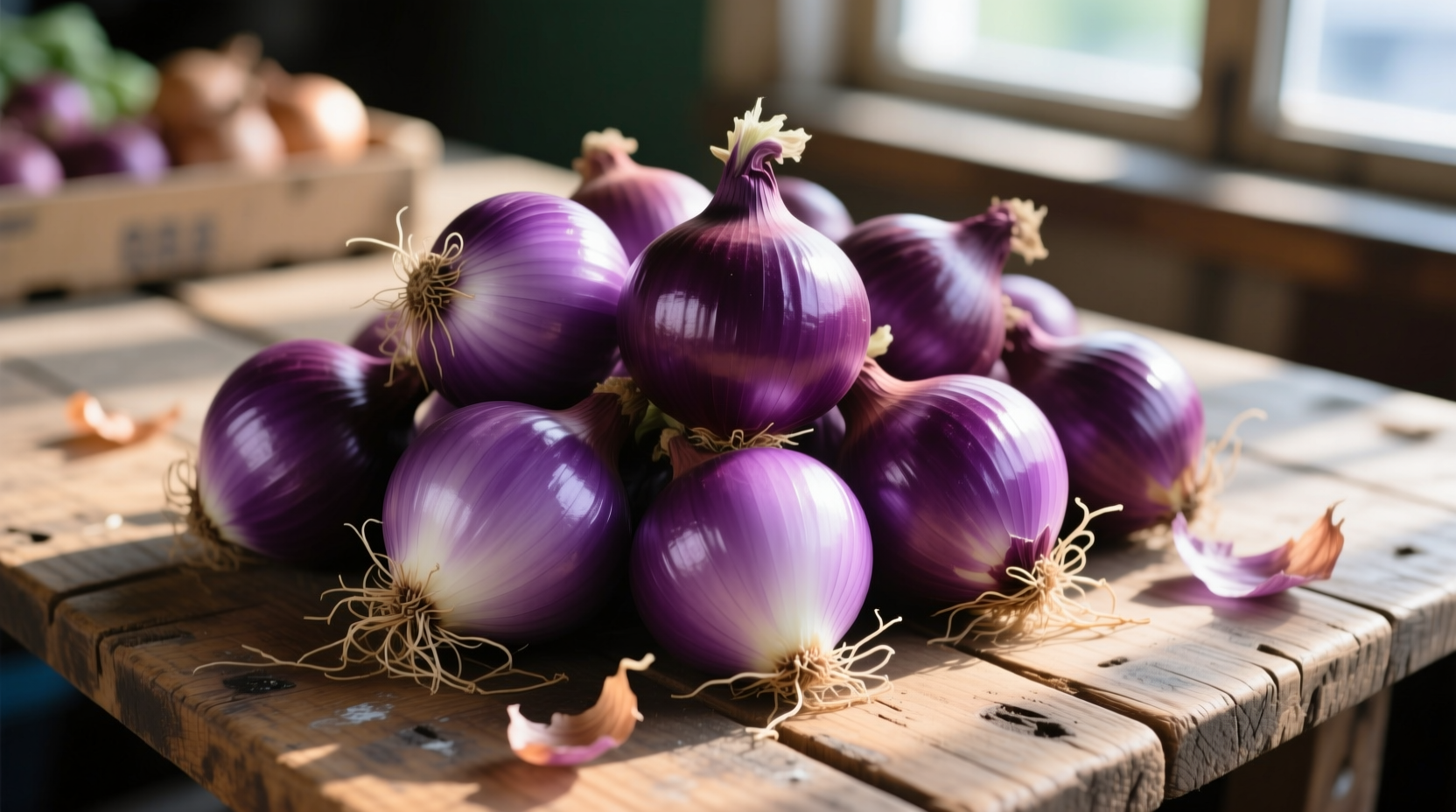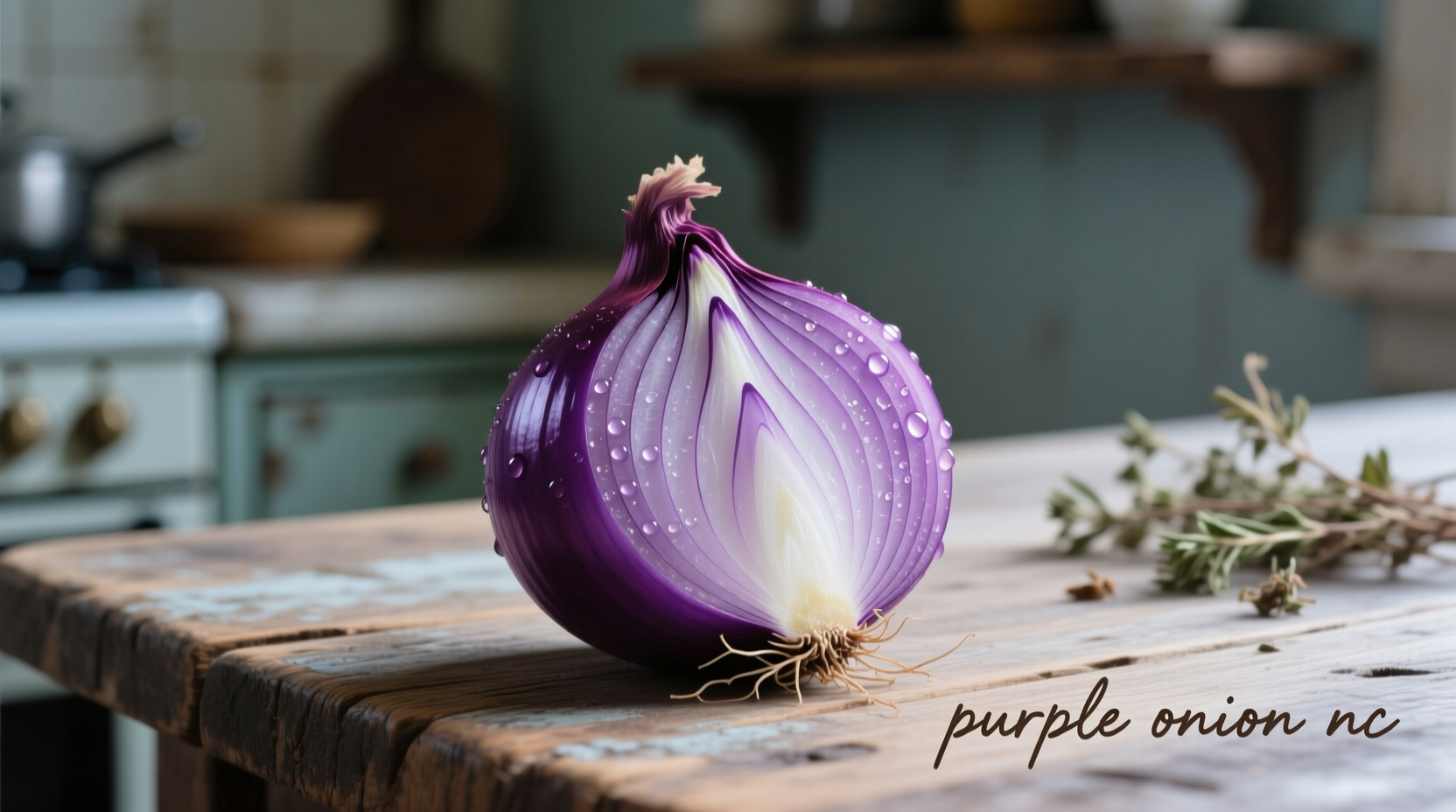When you're searching for "purple onion nc," you're likely looking for reliable information about this distinctive regional crop. Whether you're a home cook seeking the best varieties for your recipes, a gardener planning your next planting season, or simply curious about North Carolina's agricultural specialties, this guide delivers practical, verified information you can use immediately.
Understanding North Carolina's Purple Onion Heritage
North Carolina ranks among the top 10 onion-producing states in the U.S., with purple varieties accounting for approximately 30% of the state's total onion production. The coastal plain region's unique combination of sandy loam soil and moderate climate creates ideal growing conditions for these vibrant alliums. Unlike their famous Georgia Vidalia cousins, NC purple onions develop a more complex flavor profile with less pronounced sweetness due to the region's slightly higher sulfur content in the soil.
| Variety | Harvest Period | Flavor Profile | Best Culinary Uses |
|---|---|---|---|
| Red Wing | Early June | Mild, slightly sweet | Salads, sandwiches, fresh salsas |
| Ruby Ring | Mid-June | Balanced sweet-sharp | Pickling, grilling, roasting |
| Carolina Beauty | Late June | Robust, complex | Caramelizing, soups, stews |
| Wilmington Ruby | July | Sharp when raw, sweet when cooked | Ceviche, grilled applications |
North Carolina Purple Onion Cultivation Timeline
The agricultural history of purple onions in North Carolina spans over 80 years, evolving from small-scale farm production to a significant commercial crop. According to records from the North Carolina Department of Agriculture, the timeline shows remarkable development:
- 1940s-1950s: Limited cultivation primarily for local markets
- 1960s-1970s: Introduction of improved varieties with better storage capabilities
- 1980s-1990s: Expansion of commercial production with irrigation improvements
- 2000s: Development of region-specific varieties like Carolina Beauty
- 2010s-Present: Increased demand from farm-to-table restaurants and health-conscious consumers
Selecting and Storing Your Purple Onions
When choosing purple onions at North Carolina farmers markets, look for firm bulbs with dry, papery skins and no soft spots. The best specimens feel heavy for their size with minimal neck space between the layers. Unlike some other regions, NC purple onions typically have tighter layers due to the climate, which contributes to their longer shelf life.
Proper storage extends your purple onions' usability significantly. Keep them in a cool, dark, well-ventilated space at 55-60°F (13-16°C) with 65-70% humidity. Under these conditions, properly cured NC purple onions maintain quality for 2-3 months. Never store onions near potatoes, as the moisture and gases they emit accelerate spoilage.

Culinary Applications: When Purple Onions Shine
Understanding context boundaries helps maximize purple onions' culinary potential. These regional varieties excel in specific applications while underperforming in others:
- Ideal for raw applications: Their crisp texture and vibrant color make them perfect for salads, salsas, and garnishes where visual appeal matters
- Excellent for quick cooking: Maintain structure better than yellow onions when grilled or sautéed for short periods
- Limited for long cooking: Lose color and some flavor complexity when simmered for extended periods
- Avoid in delicate sauces: Their stronger flavor can overwhelm subtle dishes like béchamel
For North Carolina's signature dishes, try purple onions in shrimp and grits (thinly sliced raw on top), Carolina-style barbecue slaw, or pickled for fish tacos. The local variety known as Wilmington Ruby particularly shines in ceviche applications, where its sharpness mellows beautifully in citrus marinades.
Finding Authentic NC Purple Onions
The North Carolina Department of Agriculture operates the NC Farm Fresh directory, which lists over 200 farms selling directly to consumers. During peak season (June-July), you'll find purple onions at nearly all farmers markets across the coastal plain region, from Wilmington to the Outer Banks.
For year-round availability, look for the "Carolina Grown" logo on packaging at major grocery chains throughout the state. This certification ensures the onions were grown by North Carolina farmers, though off-season availability typically comes from stored bulbs rather than fresh harvest.
Nutritional Advantages of Purple Over Yellow Varieties
Research from North Carolina State University's Department of Food, Bioprocessing and Nutrition Sciences confirms that purple onions contain significantly higher levels of beneficial compounds:
- 20-25% more anthocyanins (powerful antioxidants responsible for the purple color)
- 15% higher quercetin content (associated with cardiovascular health)
- Comparable vitamin C and chromium levels to yellow varieties
These nutritional advantages remain largely intact even after cooking, though raw consumption maximizes antioxidant benefits. The unique growing conditions in North Carolina's coastal regions appear to enhance these phytochemical concentrations compared to the same varieties grown in other regions.
Planning Your Own Purple Onion Garden
North Carolina gardeners enjoy ideal conditions for growing purple onions. The NC State Extension Service recommends planting sets or transplants between late February and early March for spring harvest. For best results:
- Choose varieties specifically bred for the Southeast climate
- Plant in full sun with well-drained soil (pH 6.0-6.8)
- Space plants 4-6 inches apart in rows 12-18 inches apart
- Water consistently but avoid overwatering as harvest approaches
- Cure onions properly after harvest for maximum storage life
Local gardeners report that Carolina Beauty and Ruby Ring varieties consistently perform best across most of North Carolina's growing zones, with Red Wing showing particular resilience in the eastern coastal regions.











 浙公网安备
33010002000092号
浙公网安备
33010002000092号 浙B2-20120091-4
浙B2-20120091-4